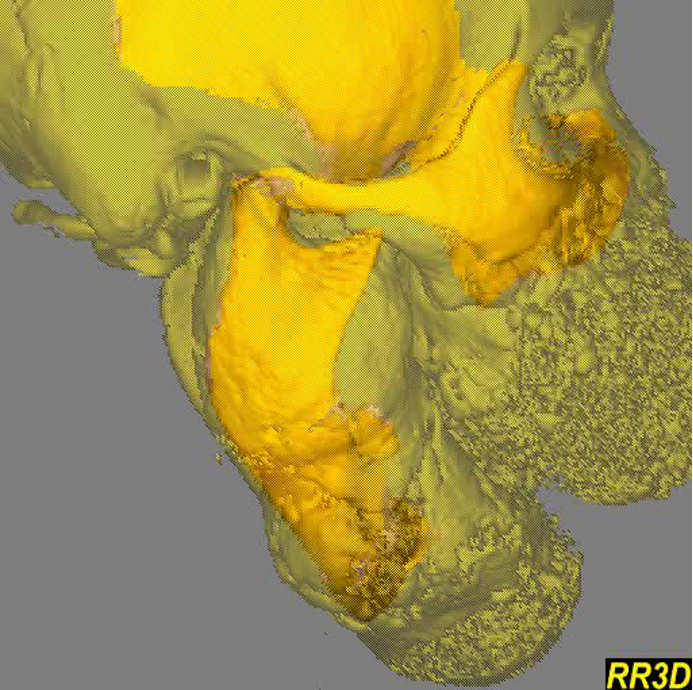Custom Surgical Templates for Facial Bone Contouring – A New Technique

Institutions
- Department of Craniofacial Surgery, Chelsea & Westminster Hospital
- Cavendish Implants, London
- Cavendish Imaging, London
- Dawood&Tanner Dental Practice
Aim of investigation
To develop a novel method of using custom surgical templates to provide intra-operative guides for facial bone contouring to treat massive fibrous dysplasia.
Material & Methods
Virtual planning of osseointegrated dental implant placement using CT/CBCT data is a well established technique. Custom drill guides produced by this process allows the accurate surgical delivery of implants to the pre-planned sites. We adapted this process to facilitate the facial recontouring required in a case of massive polyostotic facial fibrous dysplasia.
CT data was manipulated in 3D to determine the best possible final contour within the significantly expanded temporal, orbital, zygomatic, maxillary and mandibular components of the disease (Figure 1). These plans were based on normal anatomy from the contralateral side. Custom-made surgical templates were made using rapid-prototyping to allow the operating surgeon to drill to pre-determined depths within the abnormal bone using 3.8mm zygomatic implant drill bits (Figure 2). These multiple drill holes then acted as multiple “depth gauges” for bony re-contouring using conventional methods.
Results and Conclusions
This technique allows the operating surgeon to quickly and accurately contour bone, of particular benefit when normal anatomy is significantly altered by pathology. This facilitated delivery of optimal postoperative symmetrisation and reduced both surgical time and morbidity. From our careful search of the literature we believe that this is the first time such a technique has been used in the facial skeleton.